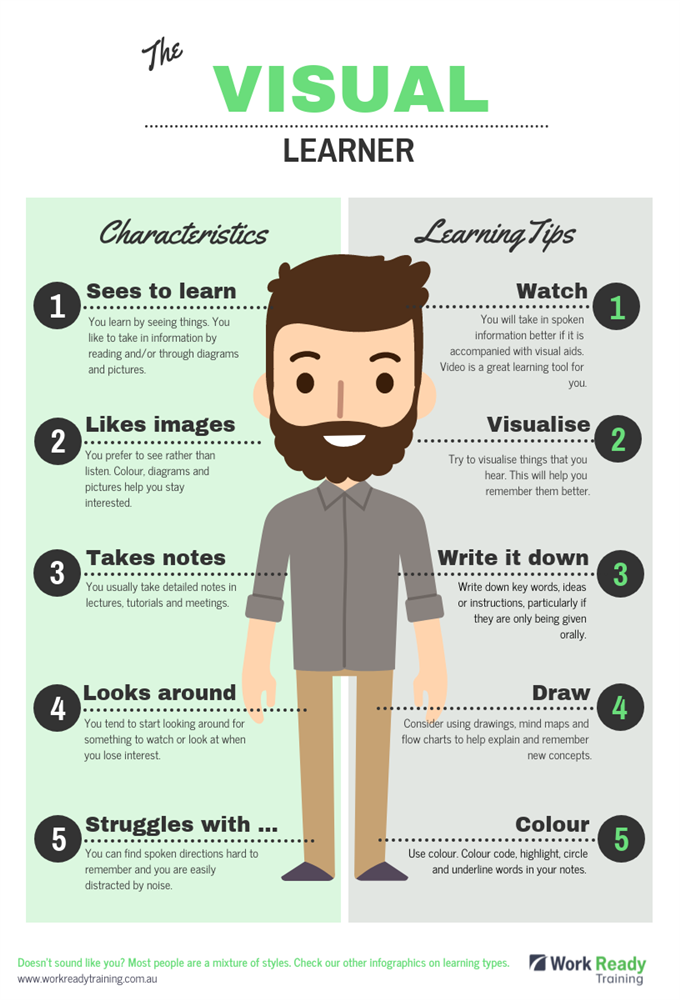e-Learning Ecologies MOOC’s Updates
Visual Learning
Visual learning simply means learning by seeing. It is a learning style where individuals learn best by seeing information presented through images, diagrams, charts, graphs, and other visual aids, rather than through text or audio/auditory methods. Various studies report that 75 of all information processed by the brain are derived from visual formats. Furthermore, visual information is mapped better in students’ minds (Williams, 2009). It can then be said that learners understand information better in the classroom when they see it. Visual information is presented in different formats, such as images, flowcharts, diagrams, video, simulations, graphs, cartoons, coloring books, slide shows/Powerpoint decks, posters, movies, games, and flash cards (Rodger et.al. 2009).
Some characteristics of visual learning include;
Visual Preference: Learners are more receptive to diagrams, maps, pictures and concepts presented in pictorial forms other than verbal form have a strong preference for seeing information, making them more receptive to learning when concepts are presented visually.
Learning through Seeing: in this method of learning, learners learn and retain information more effectively when they can see them in forms of images, videos etc.
Visual learners are very observant: Visual learners are often very observant and they pay close attention to details, including body language and facial expressions.
Strong Imagination: visual learners have strong imagination power and often think in pictures.
Examples of Visual Learning:
Using maps to understand geography.
Following videos or a recipe with pictures in home management practical.
Learning a new skill through a demonstration.
Understanding concepts through charts and graphs.
References
Rodger et.al. (2009).Engaging Middle School Teachers and Students with Alice in a Diverse Set of Subjects.SIGCSE09, March 3-7, 2009.
Williams, R, (2009). Visual Learning Theory. http://www.aweoregon.org/research_theory.html.
https://files.eric.ed.gov/fulltext/EJ1112894.pdf



The text provides a comprehensive overview of visual learning, emphasizing its significance as a powerful educational approach. I appreciate how it highlights the different formats through which visual information can be presented, which is essential for catering to diverse learning preferences. The statistics indicating that 75% of information processed by the brain is derived from visual formats underscore the effectiveness of visual learning, showcasing its critical role in enhancing comprehension and retention.
The characteristics of visual learners are well-articulated, particularly the emphasis on their strong observational skills and imagination. These traits enable them to engage with information more deeply, fostering a more profound understanding of the concepts they encounter. By incorporating various visual aids—such as diagrams, videos, and flowcharts—educators can provide a multisensory learning experience that resonates with visual learners.
Moreover, the practical examples given, such as using maps for geography and following video recipes, effectively illustrate how visual learning can be applied in real-life contexts. Overall, the text successfully advocates for the importance of visual learning in the classroom and beyond, compelling educators to incorporate visual strategies to enhance their teaching and better serve their students' learning needs.